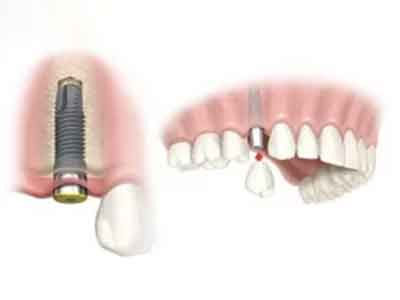For people who are missing one or more teeth, the benefits of choosing dental implants are virtually unbeatable. Dental implants are a sophisticated treatment that can restore the appearance and function of natural teeth, and often it’s difficult to detect if somebody has received dental implants in Whitby. However, is not uncommon for a bone graft to be required in preparation for implant placement.
Why Would a Bone Graft Be Needed?
A conventional dental implant in Newcastle consists of two components, the first of which is a cylinder which is placed into the jawbone where it can function just like a real tooth root. The second component is the abutment that screws into the cylinder. An abutment can be used to support an implant crown, bridge or denture.
It’s essential for the cylinder supporting the abutment and replacement tooth to be firmly anchored in the jawbone. The implant must be surrounded by a certain amount of healthy bone so that it will integrate with the jawbone, gradually fusing with this bone. If your jawbone is too soft or too thin and is unable to support the implant cylinder sufficiently, then there is a strong possibility that implant surgery may fail. With a bone graft, it’s possible for your dental implant dentist in Ajax to carefully rebuild bone so that it is thick enough and strong enough to support the implant cylinder.
Why Wouldn’t I Have Enough Bone?
Your jawbone may have diminished if you lost teeth quite some time ago because after natural teeth are removed your jawbone gradually resorbs. It’s also possible to lose bone because of dental disease, especially advanced periodontal disease or gum disease which can destroy the bone surrounding teeth, causing teeth to loosen. You might also have lost bone to trauma. Sometimes the jawbone is naturally thinner in specific areas, especially around your upper back teeth because these are the teeth nearest to your sinus cavities which are large air-filled spaces. One very common bone grafting procedure is called a sinus lift and is frequently required when replacing upper back teeth.
How Can My Dentist Tell I Don’t Have Enough Bone?
The amount of jawbone available for dental implants is carefully assessed before treatment and is why our dentist in Clarington will need to take a cone beam CT scan of your jaws. A CT scan provides a detailed 3-D image of your jawbone, so we can precisely assess the quantity and quality of available bone. Your CT scan is also used to carefully pre-plan your treatment, providing you with the best possible outcome for dental implant surgery.
Will Bone Grafting Delay My Dental Implants?
Sometimes bone grafting must be carried out as a separate procedure before receiving dental implants in Pickering. When this is the case, the bone graft material may need time to heal before the implants can be placed so it may delay implant placement slightly. If you only need a minimal amount of additional bone, it may be possible to place the bone graft at the same time as your dental implants.
If you do need a bone graft, then don’t let it put you off having dental implants in Newcastle. A bone graft will ensure your implants are more successful, function correctly, and that they look more aesthetically pleasing. A bone graft is only a small surgical procedure, but if you feel anxious, we can always provide you with sedation to keep you comfortable and relaxed.


